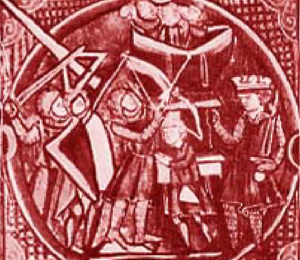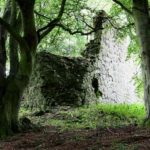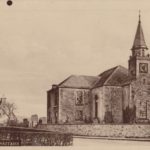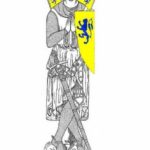Roberton was the site of one of Edward I’s mottes. It commanded an excellent view of the Clyde Valley, a major route for trader and rebel alike. The remains of the motte are clearly still visible. Excavation has proven that it dated from the late 13th/early 14th centuries. The dig revealed that a solid wooden wall was constructed on top of the mound. The motte was probably constructed by Stephen of Roberton, who had sworn an oath of fealty to Edward I in 1296 or the English administrators in the area after Wallace’s uprising. It is reckoned that these fortifications were both dismantled and burnt in the 14th Century (probably by Robert the Bruce).
A network of mottes were constructed along the Clyde Valley to afford protection to Edward’s forces from the attacks made by Scottish patriots. The most notable of these is Coulter Motte, which can be viewed from the A72, to the left of the road, prior to the bridge over the River Clyde, after you pass through Symington on the way to Biggar from Lanark. This picturesque village has an 18th Century bridge over the Roberton Burn. The west end of the village has two treasures: the site of a moated manor house; and, immediately adjacent to it, is the beautifully restored Roberton Mill.
Feature image, “South Lanarkshire landscape” by schoey is licensed under CC BY-NC-SA 2.0
Unless otherwise stated, all text, images, and other media content are protected under copyright. If you wish to share any content featured on Clydesdale's Heritage, please get in touch to request permission.





